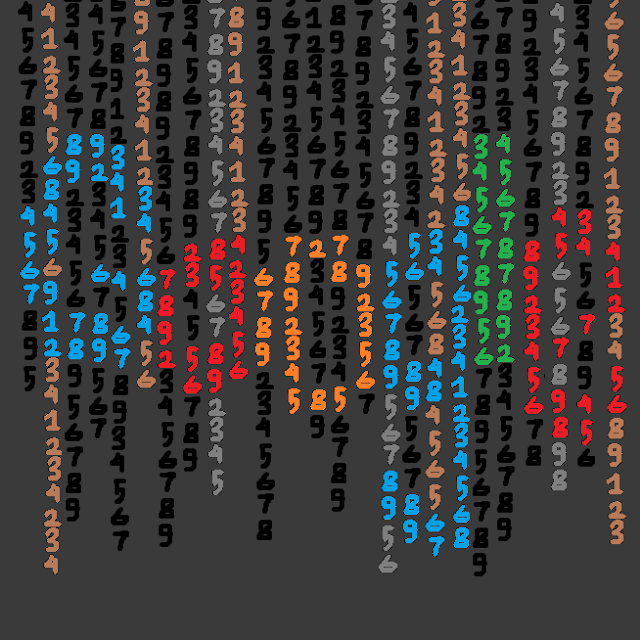Cubase - The Ultimate Digital Audio Workstation for Modern Music Production - Blog No. 37
In the ever-evolving world of music production, Cubase stands tall as one of the most powerful and versatile digital audio workstations (DAWs) available today.
Whether you’re a bedroom producer, a seasoned composer, or an audio engineer working in a professional studio, Cubase offers a rich suite of tools that empower creativity and streamline the music-making process.
But what makes Cubase a DAW of choice for so many artists worldwide? Let's dive into the history, features, and real-world applications of this revolutionary software.
Related
FL Studio - The Ultimate Digital Audio Workstation for Music Creators - Blog No. 36The Evolution of Digital Audio Workstations (DAW) - Transforming Sound Creation - Blog No. 32
The Evolution of Cubase: A Legacy of Innovation
Cubase is the brainchild of Steinberg, a German music technology company that has been pushing boundaries since its inception in 1984. The journey began in 1989 with Cubase 1.0, designed for Atari ST computers. What started as a simple MIDI sequencer quickly evolved into a comprehensive music production suite.
Over the years, Steinberg has introduced groundbreaking features that have shaped the music production landscape. The introduction of VST (Virtual Studio Technology) in 1996 was a game-changer, allowing third-party developers to create plugins and virtual instruments.
Fast forward to today, Cubase boasts a plethora of advanced features, including high-resolution audio recording, MIDI sequencing, virtual instruments, and industry-leading mixing tools.
Why Choose Cubase Over Other DAWs?
With so many DAWs on the market—Logic Pro, Ableton Live, FL Studio, and Pro Tools—why do countless producers and musicians swear by Cubase? The answer lies in its unparalleled flexibility, precision, and innovative features:
1. Pristine Audio Quality
Cubase supports high-resolution audio up to 32-bit/192kHz, ensuring crystal-clear recordings and professional-grade mixing capabilities. The audio engine is designed to deliver transparent sound with minimal latency, making it ideal for studio recording, film scoring, and live performance setups.
2. Comprehensive MIDI Capabilities
For electronic musicians and composers, Cubase’s MIDI editing tools are second to none. The Key Editor, Drum Editor, and Score Editor allow seamless manipulation of MIDI data, making it an excellent choice for producers who rely on virtual instruments and synthesizers.
3. Industry-Leading Mixing & Mastering Tools
The MixConsole in Cubase is a powerhouse, providing a console-grade signal path, flexible routing, and an extensive range of built-in effects. From EQ and compression to reverb and modulation effects, Cubase makes it easy to achieve a polished mix without needing third-party plugins.
4. Superior Workflow & Customization
One of the biggest strengths of Cubase is its workflow efficiency. Features like Track Versions, Render in Place, and Channel Strip Presets allow users to work faster and smarter. Plus, the customizable interface ensures that you can tailor your workspace to your specific needs.
5. Integration with Hardware & External Gear
Cubase is highly compatible with a wide range of MIDI controllers, external synthesizers, and studio hardware. Whether you’re using an analog synthesizer, a digital drum pad, or an outboard compressor, Cubase seamlessly integrates with your setup.
Real-World Applications: Who Uses Cubase?
From bedroom producers to Grammy-winning engineers, Cubase has found its way into the studios of many notable musicians. Here are a few use cases that showcase its versatility:
Film & Game Composers
Renowned composers like Hans Zimmer and Junkie XL have used Cubase for scoring films and video games. The MIDI Expression Control and advanced orchestration tools make it an excellent choice for large-scale compositions.
Electronic Music Producers
Producers in genres like EDM, hip-hop, and techno appreciate Cubase’s robust MIDI features and VST compatibility. Artists like Zedd and Justice have reportedly worked with Cubase for its seamless production capabilities.
Rock & Metal Bands
Bands such as Rammstein and Meshuggah have utilized Cubase for recording and mixing their music, benefiting from its high-fidelity audio processing and powerful mixing console.
Singer-Songwriters & Home Studios
Solo artists and indie musicians love Cubase for its intuitive interface and all-in-one production environment, allowing them to record, arrange, and mix their music from the comfort of their home studios.
Cubase Features That Set It Apart
1. VariAudio 3: Advanced Vocal Editing
Cubase’s VariAudio 3 gives producers the ability to fine-tune vocals with precision, similar to Melodyne and Auto-Tune. With real-time pitch correction, formant shifting, and timing adjustments, it’s an essential tool for vocal producers.
2. Control Room: Professional Monitoring
The Control Room feature lets you create multiple monitor mixes, reference tracks, and headphone sends—ideal for both home studios and professional recording environments.
3. Score Editor: Perfect for Composers
For classical musicians and film composers, the Score Editor turns MIDI compositions into fully readable sheet music, allowing seamless collaboration with orchestras and session musicians.
4. Groove Agent: Virtual Drummer
For those who need drum programming, Groove Agent provides a virtual drummer with realistic drum patterns, acoustic kits, and electronic beats.
5. Cubase Pro vs. Cubase Artist vs. Cubase Elements
Steinberg offers three versions of Cubase, catering to different user levels:
Cubase Pro – The full-featured version, ideal for professionals.
Cubase Artist – A mid-tier option for musicians and project studios.
Cubase Elements – A streamlined version for beginners and hobbyists.
How to Get Started with Cubase
If you’re new to Cubase, here are some tips to kickstart your journey:
Download and Install – Get the latest version from the Steinberg website.
Watch Tutorials – Explore free YouTube tutorials or official Steinberg courses.
Experiment with VST Instruments – Try out HALion Sonic, Padshop, and Retrologue.
Use Templates – Start with pre-designed templates to speed up your workflow.
Practice Mixing and Mastering – Use built-in EQ, compressors, and reverbs to refine your sound.
Final Thoughts: Is Cubase the Right DAW for You?
Cubase remains a top-tier DAW for music producers, composers, and engineers worldwide. Whether you’re creating chart-topping beats, scoring films, or recording live instruments, Cubase provides a comprehensive platform to unleash your musical creativity.
If you’re looking for a DAW with pristine audio quality, advanced MIDI capabilities, powerful mixing tools, and an intuitive workflow, Cubase is worth every penny.
Are you ready to take your music production to the next level? Try Cubase today and experience the future of digital audio workstations!



Comments
Post a Comment